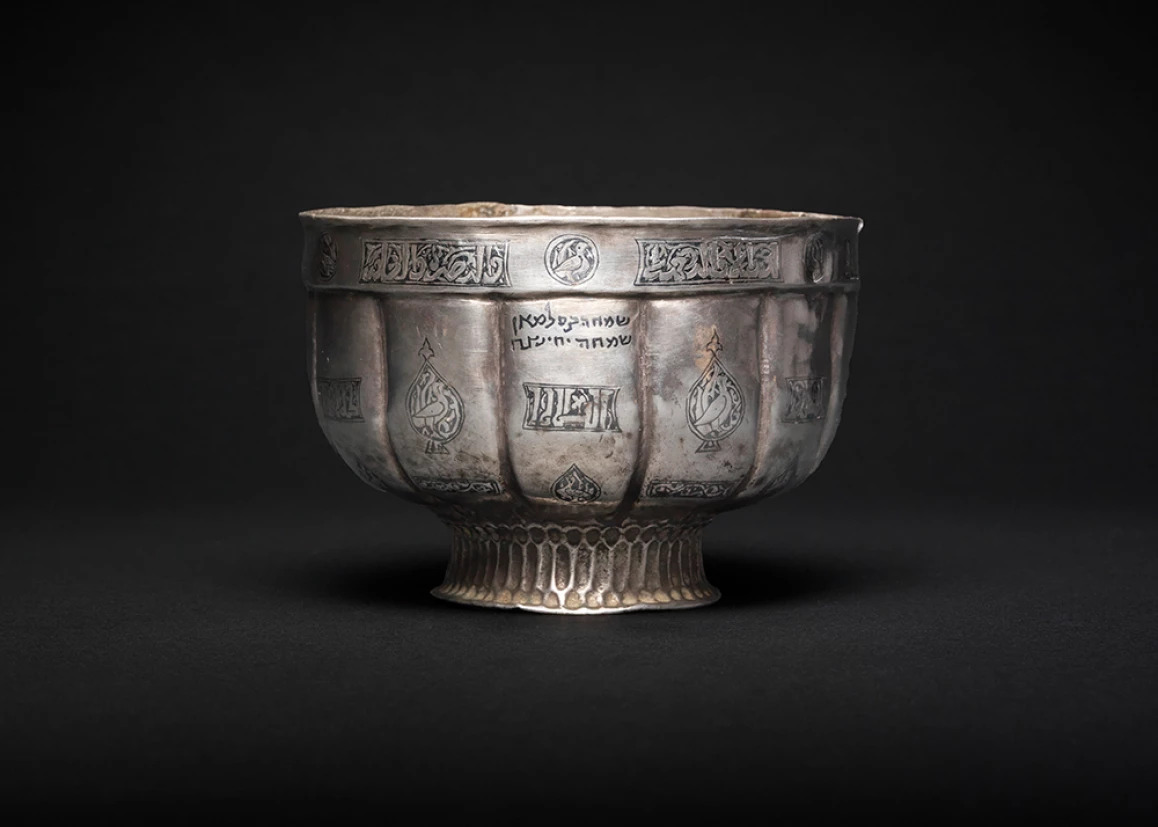A rare medieval Kiddush cup, believed to be the earliest known example of its kind, will be publicly exhibited for the first time this April and is expected to fetch between $3 to $5 US million at auction this October. Sotheby’s will offer the cup in a dedicated single-lot sale in New York on October 29.
Known as the “Cup of Joy,” the silver goblet dates to the 11th or 12th century and originates from the historic region of Khorasan—an important centre along the Silk Route that was home to a thriving Jewish community during the Middle Ages. The cup’s inscriptions in both Hebrew and Arabic reflect the intertwined artistic and cultural traditions of Jewish and Islamic societies in the region.
A Unique Survival of Medieval Judaica
Kiddush cups, used to sanctify the Shabbat and Jewish holidays, are among the most widely used ceremonial objects in Jewish tradition. They are typically made from silver or other fine materials and are often passed down through generations as family heirlooms. This particular example stands out not only for its age but also for its rarity—of the fewer than two dozen surviving pieces of medieval Judaica, this is the earliest known.
The design of the cup aligns with a small group of luxury silver objects made in Central Asia during the 11th and 12th centuries. Very few such objects have survived, as many were buried or hidden during times of unrest—such as the invasions of Genghis Khan—or were melted down to be repurposed into new items or coinage.
Hebrew and Arabic Inscriptions Reveal the Cup’s Origins
Research by scholar and author William Greenwood supports the dating and origin of the cup, suggesting it was created in a Khorasan workshop in the late 11th or early 12th century. The object features distinctive design elements, such as a vine leaf backdrop and specific inscriptions—al-yumn wa’l-baraka and ‘izz wa iqbal—characteristic of Central Asian silversmithing of that era.
The front of the cup bears the name of its early Jewish owner: “Simcha son of Salman.” An inscription in Hebrew reads “Simcha son of Salman, Simcha may he live for Eternity,” while accompanying Arabic blessings include:
“With Good-fortune, and Blessing, and Joy and Joy, and Happiness.”
“Glory, Prosperity, and Wealth, and Grace, and Success, and Health, and Well-Being, and Wealth, and Happiness, and Health, and Long Life to its owner.”
Notably, the Arabic word for joy (surur) appears twice, seemingly a deliberate nod to the Hebrew name Simcha, which also means joy and is repeated on the cup.
From the Silk Road to Sotheby’s
The cup remained hidden for centuries until it emerged in a private family collection around 1956, where it has remained ever since. This year’s unveiling at Sotheby’s London during its Islamic, Orientalist & Middle Eastern Art Week marks its first public exhibition.
While Jewish law offered limited guidance on the materials or form of ritual objects like Kiddush cups, communities often adapted secular luxury items for religious use. Manuscript illustrations from the Middle Ages show that Jewish families frequently repurposed local glass and silver vessels, and wealthier households adopted artistic trends from their Christian or Muslim neighbours, adding Hebrew inscriptions and family emblems to personalise ceremonial items.
With its exceptional craftsmanship, cultural significance, and remarkable survival, the “Cup of Joy” offers a rare glimpse into the religious and artistic life of a medieval Jewish community in Central Asia. Click here to learn more about this medieval cup.



